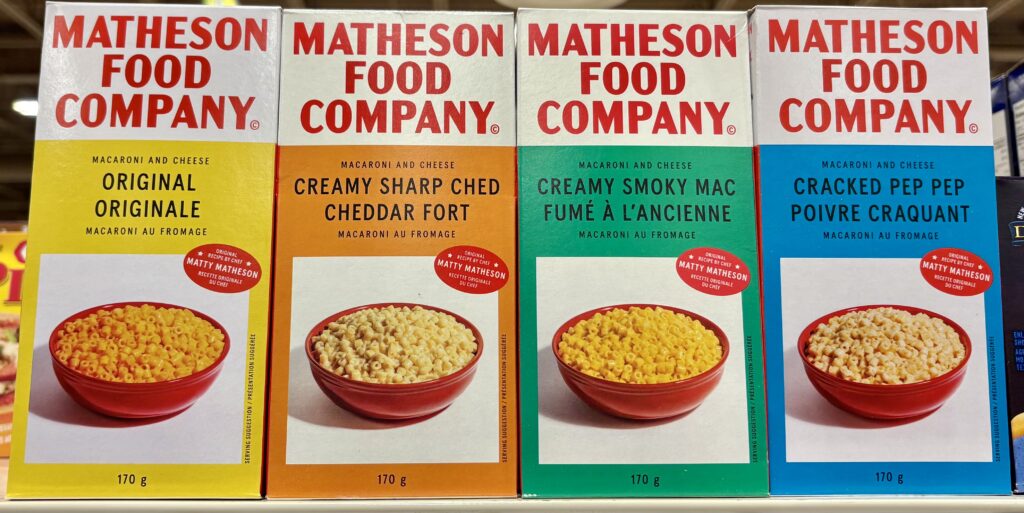Love this packaging design. I imagine they were satisfying to stack together.
I admire the retro colours and the identical red bowl with different coloured pasta in them, the macaroni carefully arranged so it hit the top edge of the bowl the same in each photo, and some of the pasta on its side and some with o-ends facing out.
I don’t have many memories of the general store my parents ran until I was four, but I remember being fascinated by how the slices of cake on the different varieties of Betty Crocker mixes looked exactly alike, the size and icing swirls identical only in different colours and flavours. If I was transported back into that store as it used to be right now, I could take you straight to that shelf, at four-year-old eye level, and hand you your choice (and being the daughter of two great salespeople, ask you if you needed birthday candles as well. Always be selling!).



















